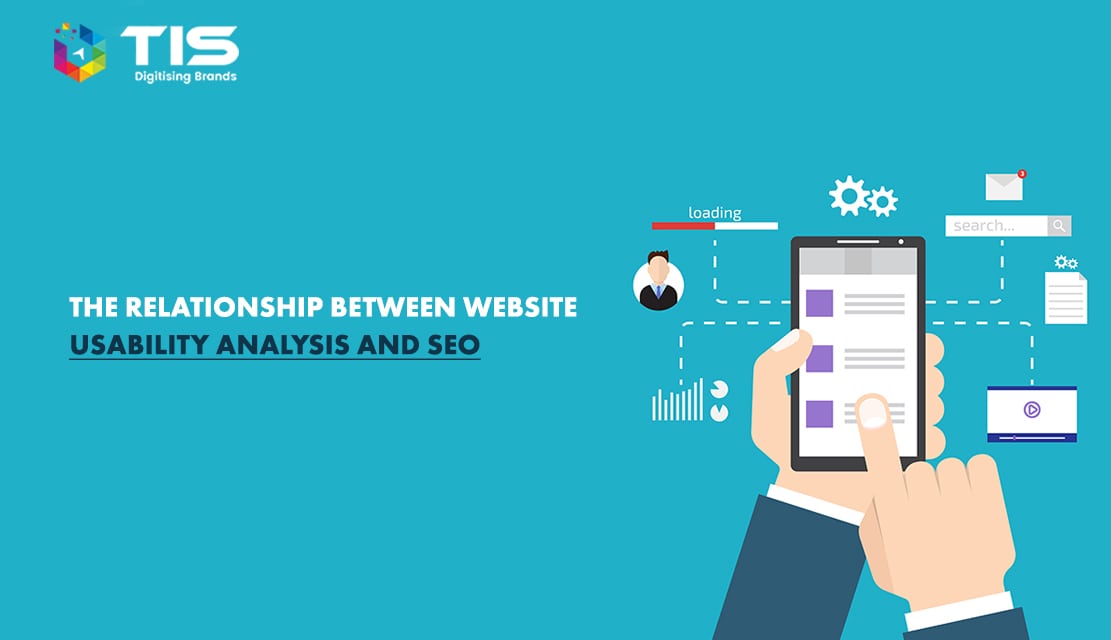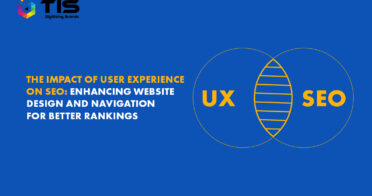






At first glance, SEO and website usability may seem unrelated. However, they are actually closely linked. SEO is what happens before a user clicks on a website link, while website usability is what happens afterward when the user lands on the website. To effectively convert website visitor into customers, both SEO and website usability are essential. One cannot be successful without the other.
In this blog, you will learn in depth about website usability and why it is crucial for SEO services. You will gain a clear understanding of the interrelationship between these two factors and be equipped to develop business strategies that can result in profits for any business.
Website usability and SEO are two interrelated factors that are crucial for any business to succeed. While website usability is about the ease of use experienced by a user upon landing on a website page, SEO is focused on increasing website visibility and organic traffic. SEO includes various measures such as link building, content optimization, and resolving technical issues to enhance a website’s search ranking and visibility.
Both website usability and SEO are important in retaining website visitor. Website usability ensures a positive user experience by making it easy for users to navigate and find the required information across all devices without technical errors. Attractive design and content arrangement are also essential.
Website usability and SEO complement each other, and a business should prioritize both to succeed. While SEO covers the initial part of showing the website on a search engine, website usability plays a crucial role in retaining website visitors. Creating a good impression on website visitors can increase conversion rates and avoid wasting SEO efforts.
In recent years, SEO has evolved beyond just keywords and content, and website usability has become a critical component of SEO. White Hat SEO techniques aim to please both users and search engine bots. Factors such as user-friendly website design, webpage loading speed, mobile optimization, content length, and more have become relevant SEO factors.
Search engines today emphasize website usability, and they prefer websites that are easy to navigate, perform well on all devices, and present information concisely. The overall user experience on a website and how content is presented are now considered as key components of SEO.
As we know, website usability is essential for SEO. Therefore, there are several ways to optimize it. Here are some proven ways to improve website usability:
When users access a website, they expect to find the information they need quickly and easily. If a website takes too long to load, users may become impatient and choose to leave the site. This can lead to a high bounce rate, which is the percentage of users who leave the site after viewing only one page. A high bounce rate can be an indication of a poor user experience, as users may feel frustrated and discouraged from using the site.
To avoid this problem, it’s important for websites to focus on reducing page load times. This means that the time it takes for a web page to fully load should be minimized as much as possible. Websites that load quickly are more likely to rank well in search engines and provide a better user experience.
One effective way to reduce page load times is to compress and resize images appropriately. Image can be a major contributor to slow loading times, particularly if they are large or not optimized for web use. By compressing images and reducing their size, the load time of a page can be significantly reduced, resulting in faster loading times.
Another technique for reducing page load times is to scale images to the correct size on the website. This means that images should be resized to fit the layout of the website, rather than being displayed at their full size. This can help to decrease the amount of data that needs to be transferred when the page loads, resulting in faster loading times.
In addition to these image optimization techniques, there are other measures that can be taken to decrease page loading times. For example, browser caching can be used to store frequently accessed files on the user’s device, reducing the amount of data that needs to be transferred when the page loads. Optimizing CSS files can also help to reduce the time it takes for a page to load by minimizing the amount of CSS code that needs to be processed. By implementing these techniques, websites can improve their loading times and provide a better user experience.
A responsive website design allows the website to function smoothly across all devices, including smartphones, desktops, and tablets. As more and more users are accessing the web via mobile devices, it’s important for websites to be mobile-friendly.
If a website is not responsive, it could result in a significant loss of traffic and sales. To ensure that the website is accessible to all users, regardless of the device they are using, a desktop theme-based version should be applied. Making minor tweaks, such as adjusting the maximum width of the page and image sizes, can help to make the website responsive without confusing the user.
A responsive design can be implemented by adding the responsive design code to the page, which lets the website adjust automatically based on the device. It’s important to remember that major changes shouldn’t be made to the website, because it can only confuse the user. Making small adjustments and implementing a responsive design will improve a website’s user experience and ensure that every user can access it.
Having an easy-to-navigate and familiar website design is important for improving user experience and for optimizing usability and SEO. While it’s important to make your website unique and stand out from the competition, it’s equally important to ensure that users can easily find what they are looking for on your website.
Users prefer simple website layouts and easy navigation, and if they have trouble navigating a website, they’re likely to leave. By providing a comfortable and familiar environment for users, they can easily navigate through the website and find the information they need, resulting in a positive user experience.
Although unusual navigation techniques may seem creative, they are unlikely to generate positive results if users find them hard to use. It’s important to keep a familiar website layout that makes it easy for users to navigate and find what they need quickly.
It’s important to have a user-friendly website because it helps website usability and makes it more enjoyable for users, which improves SEO. The more you make your users happy on your website, the more likely they will stay longer, interact with your content, and share it with others, which results in more traffic and better search engine ranking.
In conclusion, website usability and SEO are closely related, and both are critical for the success of any business. While SEO focuses on enhancing website visibility and organic traffic, website usability ensures a positive user experience by making easy for users to navigate and find the required information without technical errors. Several factors contribute to website usability and SEO, including the design of the site, the load time, mobile optimization, and the length of the content. Usability plays a major role in retaining website visitors, making it an essential part of SEO. A website design that is easy to navigate and familiar to users will optimize website usability. Businesses should reduce page loading times, use responsive design, and make their website easy to navigate and use.

Introduction: The topic highlights the crucial role of user experience (UX) in search engine optimization (SEO) and emphasizes the significance of enhancing website design and navigation to attain improved rankings in search engine results. It delves into the correlation between user experience and SEO, recognizing the interdependency between the...
Read More

Introduction: Google algorithm updates play a critical role in determining the ranking of search results by modifying the intricate rules and calculations involved. Their primary objective is to enhance the quality and relevance of search results, ensuring that users find the most valuable and accurate information. However, these updates...
Read More

Introduction The role of content marketing in SEO is essential for businesses aiming to achieve better rankings and enhance their online visibility. Content marketing revolves around the creation of valuable, informative, and engaging content that resonates with the target audience. In the realm of SEO, high-quality content holds significant...
Read More